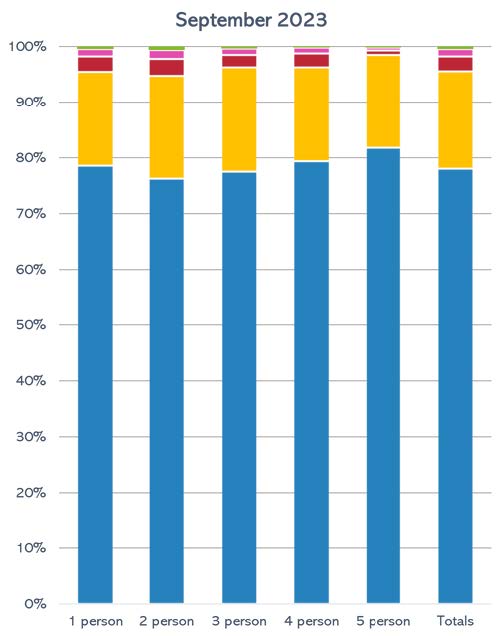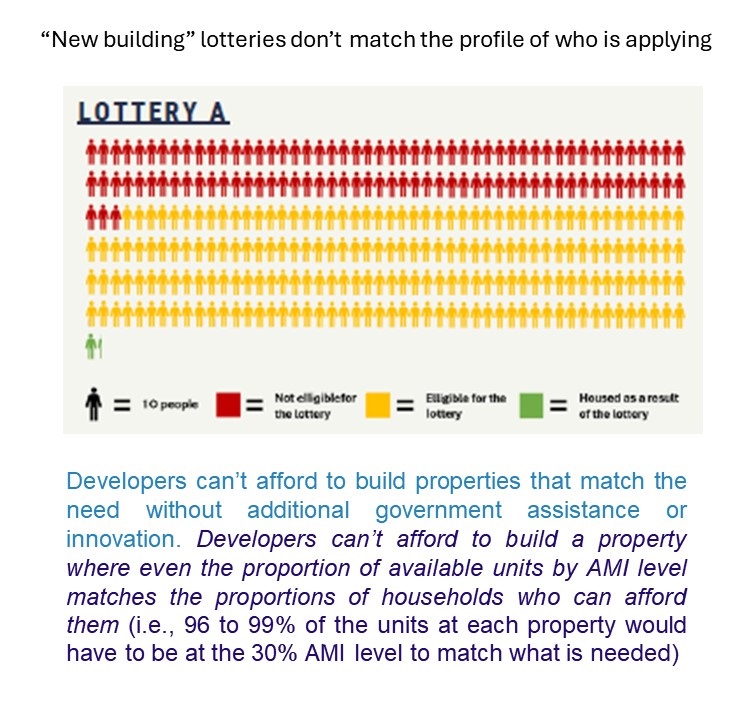HousingWorks is the only Affordable Housing system providing these three interconnected services:
A Comprehensive Search and Apply Module collects unduplicated data on applicants from the moment they start applying anywhere to the moment their housing search ends.
A Centralized Inventory and Waitlist Module collects and reports on low-income housing inventory, while simplifying the updating and maintenance of waitlists.
Unique data sets are a byproduct of the comprehensive housing search module and the equally comprehensive waitlist services module providing real-time, supply-demand data that can help policy and planning agencies move effectively forward.
Since its inception in 2000, the HousingWorks team understood that it was essential to offer all three services simultaneously, through an ecosystem structure, where data is collected in the background of searching for and managing housing application/waitlist functions.
The data provided by HousingWorks has helped numerous development companies plan and build new affordable housing units, The testimonial below helps further explain how.
"An important outcome of our work with HousingWorks has implications far beyond the development agenda of one Boston CDC. Many housing advocates have long been aware that much of the affordable housing that is being developed is not in fact affordable to a large number of applicants who do not have access to rental assistance. HousingWorks’ database makes it plain that the majority of individuals and families seeking affordable housing in Boston are Extremely Low Income…living in poverty. The majority of the affordable units being developed are not affordable to most of the applicants for affordable housing Fenway. CDC initially felt that it could address this issue internally by changing how rents in our future developments could be calculated. This proved to be impossible and has opened important questions about how affordable housing is being underwritten, whether rental assistance can be better integrated into new affordable housing and how new programs (such as the Boston Housing Authority City rent subsidy program) can address this serious shortcoming of the affordable housing sector."
Mat Thall, Vice President, Fenway Community Development Corporation
---
Additionally, HousingWorks advocates for and supports implementation on new City of Boston initiative.
The Boston Rental Subsidy Coalition comprised of 20 different advocacy groups, lobbied the mayor's office to institute one of the first programs to convert so-called "affordable" housing into truly affordable housing. The game changed when HousingWorks brought its data reports to city hall as a new member of the coalition that demonstrated the need and an approach to providing truly affordable housing in Boston.
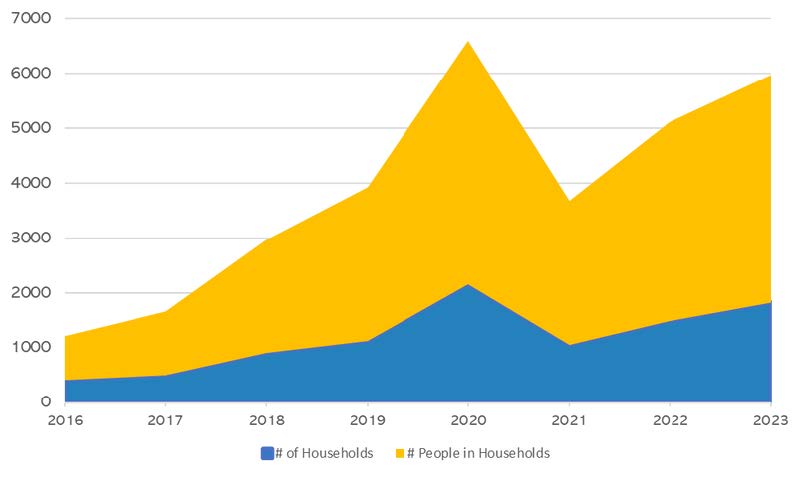
"In 2020 Fenway CDC embarked on a strategic planning exercise to determine what income groups and populations we should be serving in future affordable housing developed by the organization. Our goal was to ground our values, vision and mission in solid information about where was the greatest need and demand for affordable housing in both the Fenway neighborhood and the entire City of Boston. The census was of very little help; waiting lists for existing Fenway CDC developments – not always up to date -- provided a bit more information. We were extremely fortunate, however, in having HousingWorks as part of the working group developing our policies and goals. The HousingWorks enormous database of over 20,000 families seeking affordable housing in Greater Boston was a treasure trove. And HousingWorks creative responses to our requests to manipulate, extract, sort their data helped us to present a detailed and nuanced policy recommendation to the entire Fenway CDC Board of Directors."
Mat Thall, Vice President, Fenway Community Development Corporation
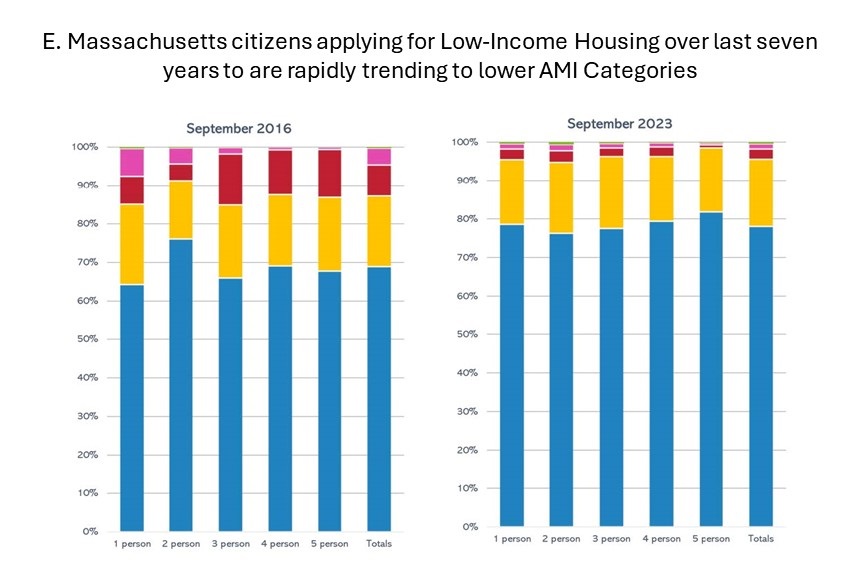
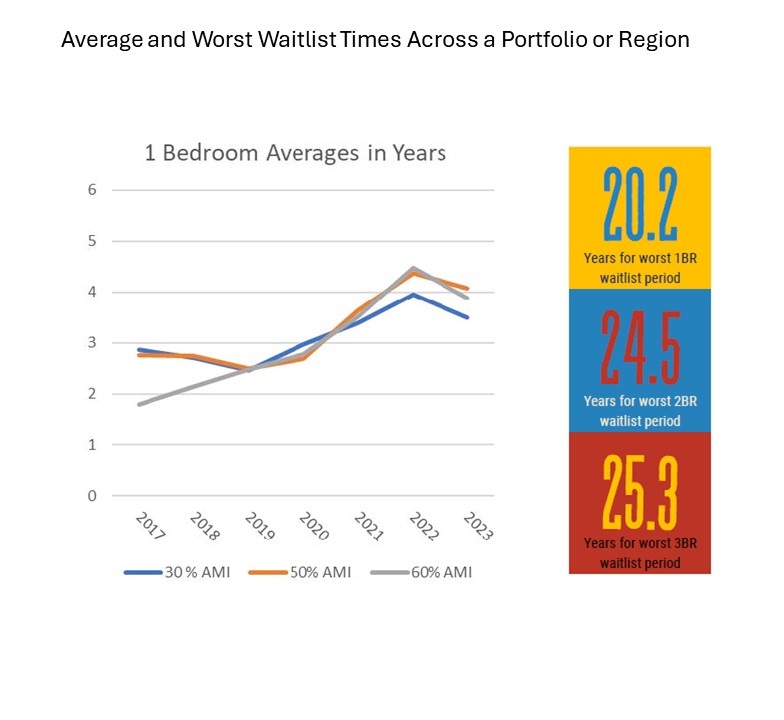
The Affordable Housing Crisis in Massachusetts
Never before captured data shows that developments deemed “affordable” are no longer affordable for applicants, landlords, and even developers. Together, these reports show that the state’s Affordable Housing Plan may help the middle class but does not address the thousands of housing seekers already sitting on low-income waitlists.
Credits:
Data Conceptualization, Data Conclusions, Editing, Chart and Report Design
Thank you to:
Liz Hauck, John Kraft, Daniel J. Curley, Mat Thall, Michael Kane, Thuan Nguyen, and Dan Derman

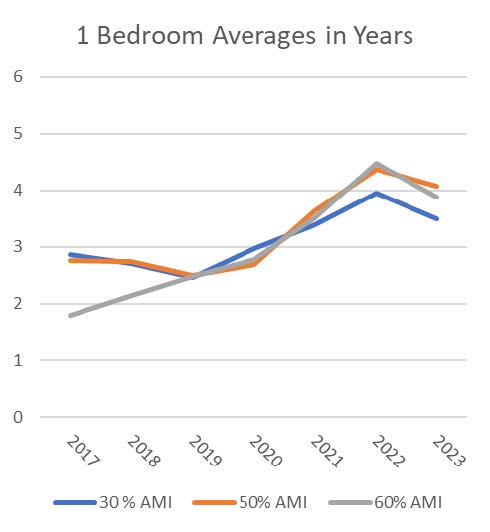
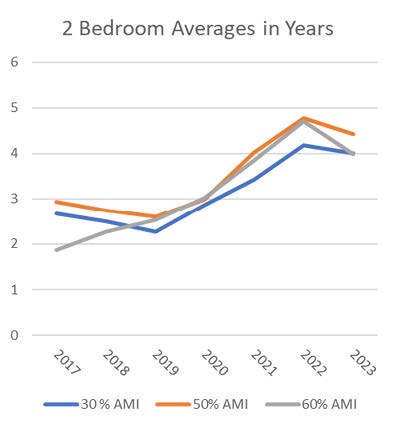
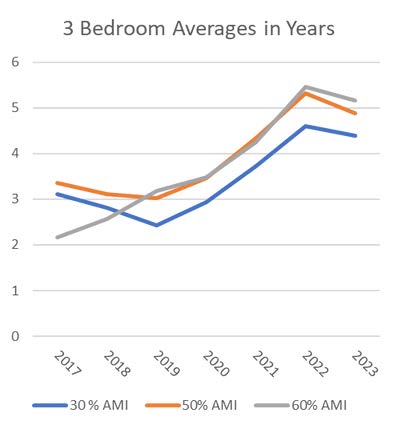

Sept 1, 2019 ~ For 19,000 + households applying in the Boston/Cambridge area
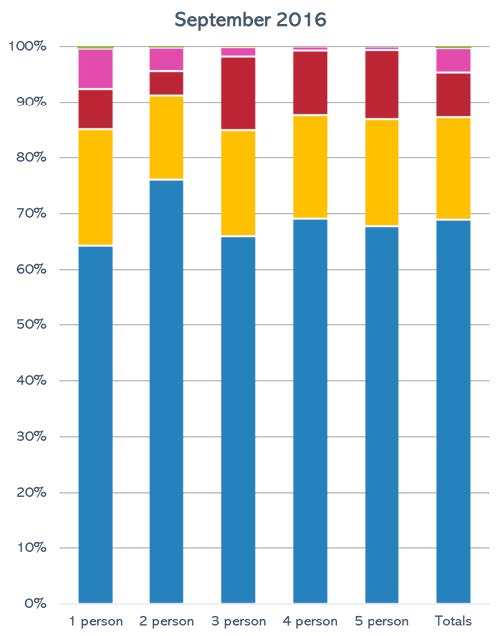
Dec 31, 2022 ~ For 20,000 + households applying to the same portfolio of properties in the Boston/Cambridge area
